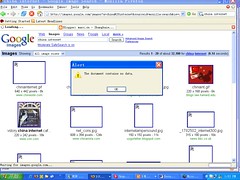 Inglese tratto da: questa pagina
Inglese tratto da: questa pagina
Italiano tratto da: questa pagina
Data documento: 07-04-2011
![]() photo credit: Marc van der Chijs
photo credit: Marc van der Chijs
Digital Agenda: “Dot.eu” internet domain name helps small businesses gain Single Market visibility
Agenda digitale: il nome di dominio internet “Dot.eu” aiuta le piccole imprese ad accrescere la loro visibilità sul mercato unico
7th April 2011 marks the fifth birthday of the “.eu” (“Dot.eu”) internet domain name. “.eu” has become the 9th biggest top-level domain (TLD) on the Internet, the 5th most popular country code top-level domain worldwide and ranks in 4th place in Europe.
Il 7 aprile 2011 segna il quinto anno dalla creazione del nome di dominio internet “.eu” (“Dot.eu”), che nel frattempo si è attestato al nono posto tra i domini di primo livello più importanti su internet ed è divenuto il quinto dominio di primo livello geografico più diffuso a livello mondiale e il quart o in Europa.
Having a “.eu” domain is especially beneficial to small and medium-sized companies as it raises their profile on European markets by providing them with a pan-European identity on the Internet.
Avere un dominio “.eu” è particolarmente vantaggioso per le piccole e medie imprese in quanto, fornendo loro un’identità paneuropea su internet, ne rafforza la visibilità sui mercati europei.
Registrations for a “.eu” domain have grown every year since its introduction and now reach almost 3.5 million, making it the ninth most popular top-level domain in the world.
Dalla sua introduzione, le registrazioni per un dominio “.eu” sono aumentate ogni anno e hanno ora raggiunto quasi 3,5 milioni, ponendolo al nono posto tra i domini di primo livello più diffusi a livello mondiale.
Neelie Kroes, Vice-President of the European Commission responsible for the Digital Agenda said:
Neelie Kroes, vicepresidente della Commissione europea responsabile dell’agenda digitale, ha così commentato:
“I am particularly pleased to see that “.eu” is ever more popular among small and medium-sized enterprises that wish to gain better visibility in Europe’s Single Market.
“Noto con grande soddisfazione che il dominio “.eu” acquista crescente popolarità fra le piccole e medie imprese che intendono migliorare la loro visibilità sul mercato unico europeo.
>>> Having a “.eu” web presence gives individuals and companies a European identity and is instantly recognised by potential customers across all borders.”
La presenza sul web con un nome di dominio “.eu” conferisce ai singoli individui e alle imprese un’identità europea immediatamente riconoscibile dai potenziali clienti in tutti i paesi.”
A “.eu” web presence is instantly recognised by potential customers that may otherwise be suspicious of a company with a country domain name they do not recognise.
Un nome di dominio “.eu” è immediatamente riconoscibile dai potenziali clienti, che potrebbero altrimenti essere sospettosi di una società con un dominio geografico sconosciuto.
Examples of SMEs taking up a “.eu” domain include:
Esempi di PMI con un dominio “.eu” sono:
– many small local companies in the Italian region of Tuscany
– numerose piccole imprese locali in Toscana;
– a Lithuanian company installing swimming pools
– un’impresa lituana di installazione di piscine;
– a British events marketing company
– una società britannica di promozione di eventi;
– a Dutch children’s clothing shop.
– un negozio olandese di abbigliamento per bambini.
“.eu” is not only easy to register, but also easy to manage in case of problems, as it operates in any of the 23 official languages of the EU.
Il dominio “.eu” non è solo facile da registrare, ma anche facile da gestire in caso di problemi, in quanto funziona in tutte le 23 lingue ufficiali dell’UE.
It also allows the use of special letters such as “é”, “ö”, “ç” as well as non-Latin scripts such as the Cyrillic , or the Greek (the so-called internationalised domain names or IDNs) to the left of the “.eu” web-address.
Consente inoltre, alla sinistra di “.eu”, l’utilizzo di lettere speciali come “é”, “ö”,” ç” e di caratteri non latini come quelli dell’alfabeto cirillico o greco grazie ai nomi di dominio internazionalizzati o IDN.
The largest take-up for “.eu” is in Germany (31% of total “.eu” domains), The Netherlands (13%), the United Kingdom (10%), France (9%) and Poland (6%).
I paesi in cui i nomi di dominio “.eu” sono più diffusi sono la Germania (31% del totale), i Paesi Bassi (13%), il Regno Unito (10%), la Francia (9%) e la Polonia (6%).
More recently, the use of “.eu” has been growing faster in the Czech Republic, Estonia, Lithuania, Poland and Slovakia.
Più di recente, l’utilizzo di “.eu” è aumentato con maggior rapidità nella Repubblica ceca, in Estonia, in Lituania, in Polonia e in Slovacchia.
Background
Contesto
“.eu” first opened on 7 December 2005 to holders of prior rights including trade mark holders and public bodies (IP/05/1510).
Il dominio “.eu” è accessibile dal 7 dicembre 2005 ai titolari di diritti anteriori, compresi i titolari di marchi e gli organismi pubblici (cfr. IP/05/1510).
Since early April 2006, registration has been open to all EU residents and organisations established in the EU (IP/06/476).
Dall’inizio del mese di aprile 2006 le registrazioni sono state aperte ai residenti dell’UE e alle organizzazioni aventi sede nell’UE (cfr. IP/06/476).
Management of the “.eu” registry (the database holding all .eu registrations) is entrusted to EURid, an independent non-profit-making organisation.
La gestione del registro “.eu” (la base dati che contiene tutte le registrazioni .eu) è affidata a EURid, un organismo indipendente senza scopo di lucro.
By its first anniversary, 2.5 million “.eu” domain names had been registered (IP/07/483), another 300,000 domain names were added in 2007 (IP/08/530).
Un anno dopo la sua creazione erano stati registrati 2,5 milioni di nomi di dominio””.eu” (cfr. IP/07/483), ai quali si sono aggiunti 300 000 nuovi nomi nel 2007 (cfr. IP/08/530).
In 2009, registration reached the three million mark (see IP/09/48).
Nel 2009 le registrazioni hanno raggiunto i tre milioni (cfr.IP/09/48).

